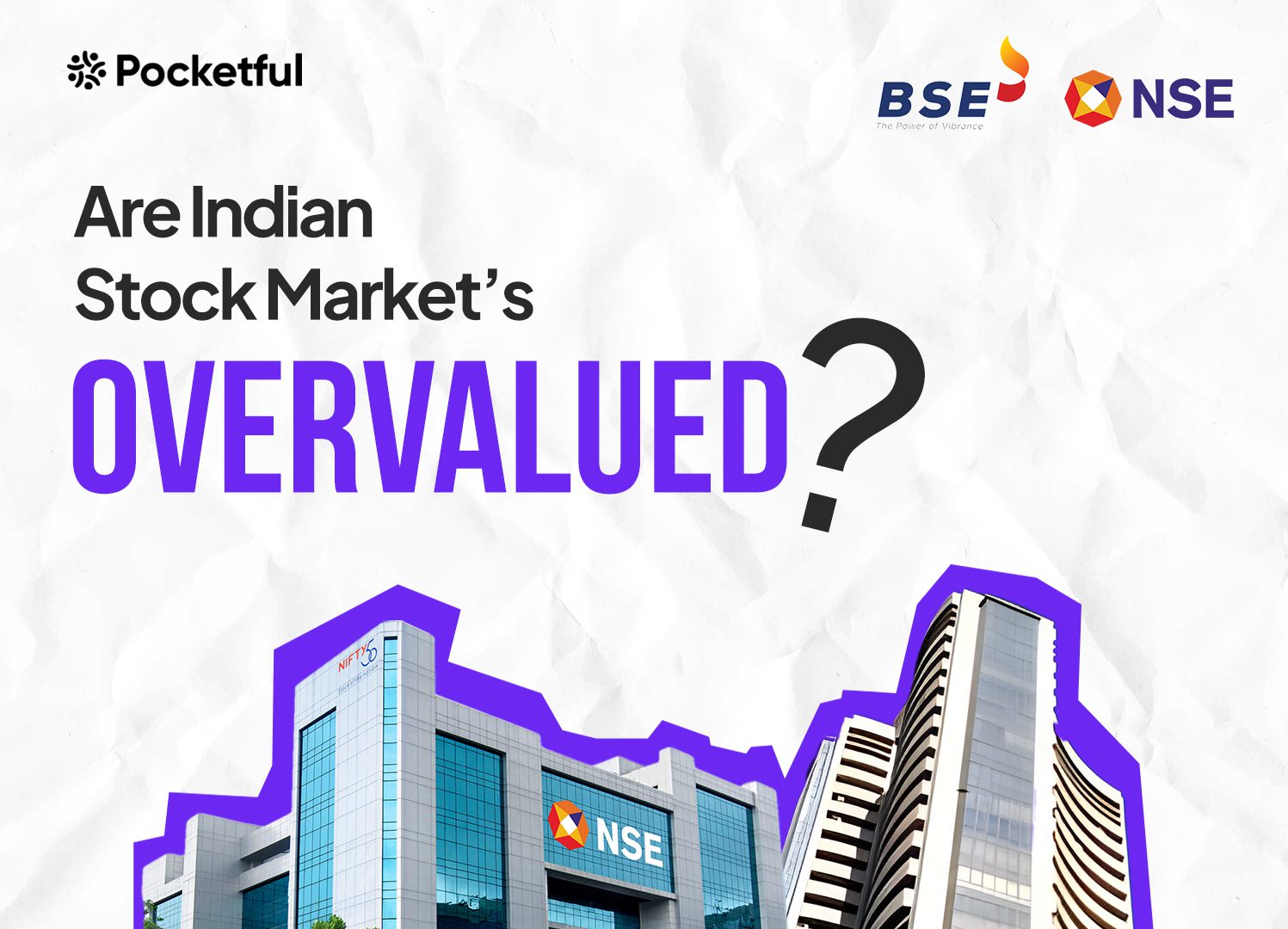| Type | Description | Contributor | Date |
|---|---|---|---|
| Post created | Pocketful Team | Apr-12-24 |
Read Next
- Rakesh Jhunjhunwala Portfolio 2025: Top Holdings & Strategy
- BankBeES vs Bank Nifty – Key Differences
- Current Ratio vs Quick Ratio Key Differences
- Best REIT Stocks in India 2025
- Best Data Center Stocks in India 2025
- Best Rare Earth Stocks in India
- Top 10 investment banks in India
- What Is iNAV in ETFs?
- Best Investment Options in India 2025
- Best Energy ETFs in India 2025
- Radhakishan Damani Portfolio 2025: Stocks & Strategy Insights
- Best SEBI Registered Brokers in India
- Best Air Purifier Stocks in India
- Best Space Sector Stocks in India
- Gold Rate Prediction for Next 5 Years in India (2026–2030)
- Difference Between Equity Share and Preference Share
- Vijay Kedia Portfolio 2025: Latest Holdings, Strategy & Analysis
- Raj Kumar Lohia Portfolio 2025: Holdings, Strategy & Analysis
- How to Earn Passive Income Through Dividend-Paying Stocks in India
- Top 10 Richest Investors in the World 2025 – Net Worth, Key Investments & Strategies
- Blog
- are indian stock markets overvalued
Are Indian Stock Markets Overvalued?


“The market is overvalued; can I sell my portfolio holdings and then buy later at a lower price?” – This is the most popular question among investors whenever the market reaches an all-time high. Well, there is no straightforward answer to this question as we cannot time the market.
India’s booming stock market has been a source of celebration for many investors since it has been on a bull run in recent years, reaching all-time highs. But this surge has led to a critical question of overvaluation.
In this blog, we will explore the key valuation metrics, and factors responsible for the bull run and try to conclude as to whether the market is overvalued.
Why The Rally?

The Indian stock market has been undergoing a strong bull trend, with indices such as the SENSEX and NIFTY hitting new highs. Not only the SENSEX and NIFTY, but practically all indexes have surged in the last year, with PSUs and Infrastructure stocks leading the way. Even the BSE MIDCAP and BSE SMALLCAP have given nearly 70% returns in the past year.
This surge can be attributed to a confluence of positive economic and market-driven factors:
- India’s GDP growth remains positive, with expectations of moderate growth even in the latter half of the fiscal year. This economic strength translates to confidence in the overall business environment.
- Inflation seems to be under control, offering some relief after a period of rising prices. This stability fosters a more predictable economic climate for businesses and investors.
- Many companies have delivered positive results in recent quarters, which either meet or exceed market expectations. This showcases the healthy corporate performance and investor sentiments.
- The US Federal’s Reserve dovish stance, with no further interest rate hikes anticipated, has eased global liquidity concerns. This will benefit emerging markets like India.
- FPIs have returned to the Indian markets after a mid-November calm. This renewed interest provides a fresh wave of liquidity and boosts market optimism.
Read Also: Top 10 Sectors in the Indian Stock Market
Are Markets Overvalued?
Now, the key question is whether our markets are overvalued. Let’s break it down in simpler terms. To assess whether the Indian stock market is overvalued, we need to analyse key valuation ratios. Below is a breakdown of some key metrics:
1. P/E Ratio (Price-to-Earnings Ratio)
This ratio compares a security’s current market price to its earnings per share. A high P/E ratio can indicate overvaluation, particularly if it is significantly higher than the historical averages.
2. Market Capitalisation to GDP Ratio
This compares the total market value of all listed companies to the country’s gross domestic product (GDP). A higher ratio could indicate that the market value of listed companies has grown faster and is not in sync with the overall economy of the country.
3. Index Earning Yield & 10-year G-Sec Yield
Index Earning Yield is the average earnings yield of the companies within the Index like NIFTY 50 or Sensex 30. Earnings yield is calculated as the inverse of the P/E ratio. A higher yield indicates that stocks are relatively cheaper compared to their earnings potential or vice-versa.
The 10-year G-sec yield is the annual interest rate the government pays on a 10-year government bond. It reflects the risk-free rate of return as sovereign bonds are considered the safest instrument.
Combining the above two forms the BEER Ratio, also known as the Bonds Equity Earnings Yield Ratio or Gilt-Equity Yield Ratio (GEYR) and is used to compare the relative attractiveness of stocks and bonds in a particular market. A higher E/P relative to G-Sec yield suggests stocks might be more attractive.
Now let us have a quick analysis of the current and historical valuation of key metrics of market valuation

PE Ratio
As of April 2024, the Nifty 50 P/E Ratio is at around 23. Below 20 is considered a decent number as per market experts. The current PE Ratio is higher than the historical average which suggests slight overvaluation in market. The P/E ratio of Nifty 50 crossed 40 in 2021. Keep in mind that the P/E ratio can be affected by earnings of the companies; the higher the earnings, the lesser the P/E ratio.
Market Capitalisation to GDP Ratio
India’s Market Capitalisation accounted for 124% of its Nominal GDP in Dec 2023, compared with a percentage of 104.8% in the previous year, i.e., 2022. The percentage reached at an all-time high of 146.4% in December 2007 and a record low of 23% in December 2021.
The current number, i.e., 124% is significantly higher than the historical average of around 87% which suggests overvaluation in the Indian markets.
While India’s MCAP/GDP ratio is lower than that of some developed nations, it is considerably higher than its historical average.
BEER Ratio
As discussed above, the BEER ratio can be calculated by dividing the bond yield with earnings yield (E/P).
The current 10-year Bond yield and Earning yield of the Nifty 50 index stand at 7.87% and 4.65%, respectively.
Therefore, BEER Ratio = 7.87 / 4.95 = 1.58.
Additionally, if the BEER Ratio > 1, the scenario suggests that bonds might be a more attractive option compared to stocks, i.e., equity markets are relatively overvalued as compared to the bond markets.
Read Also: How Does the Stock Market Work in India?
Conclusion
To wrap up, the P/E Ratio of broader indices such as Nifty 50 and Sensex 30 is above the historical average, suggesting some potential overvaluation. The market cap to GDP Ratio is at an all-time high, indicating the market capitalisation has grown faster than the overall economy.
Overall, there are mixed signals about the Indian stock market’s valuation. While some metrics suggest overvaluation, they are not at extreme highs. However, the Indian stock market’s valuation remains a topic of debate. The above findings do not indicate that markets are due for an instant correction. An increase in corporate earnings, GDP growth, political stability, etc. can significantly affect the above-mentioned metrics and overall sentiments of the market. A comprehensive analysis considering various factors is important before drawing a definitive conclusion.
“The markets can remain irrational longer than you can remain solvent.” – John Maynard Keynes.
Disclaimer: The securities, funds, and strategies mentioned in this blog are purely for informational purposes and are not recommendations.
Frequently Asked Questions (FAQs)
Are Indian stock markets overvalued?
There are mixed signals. P/E ratios are above historical averages, but not at all-time highs. The market cap to GDP ratio is at an all-time high, which could indicate overvaluation.
How can I analyse the valuation of the Indian stock market?
Consider factors like the P/E ratio, market cap/GDP Ratio, sectoral valuations, etc.
What is the full form of the BEER Ratio?
BEER Ratio stands for Bond Equity Earnings Yields Ratio.
Where can I find more information on Indian stock market Indices?
One can check out the official websites of NSE (www.nseindia.com) and BSE (www.bseindia.com) for data of various indices.
Apart from valuation ratios, what other factors can we consider when analysing markets?
Consider looking at sector specific valuations, global market conditions, economic growth prospects, RBI policies, Political Stability, etc.
Disclaimer
The securities, funds, and strategies discussed in this blog are provided for informational purposes only. They do not represent endorsements or recommendations. Investors should conduct their own research and seek professional advice before making any investment decisions.
Article History
Table of Contents
Toggle